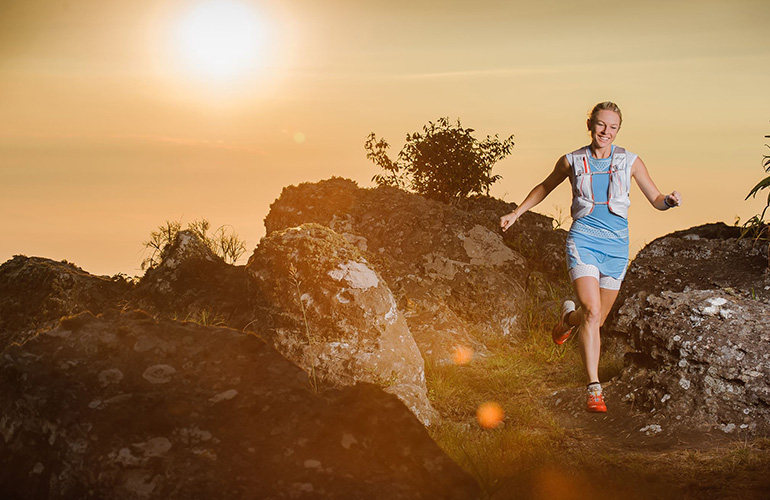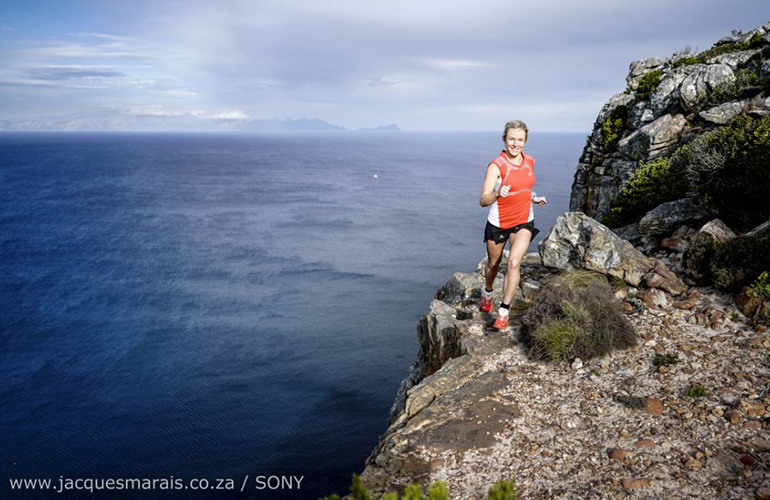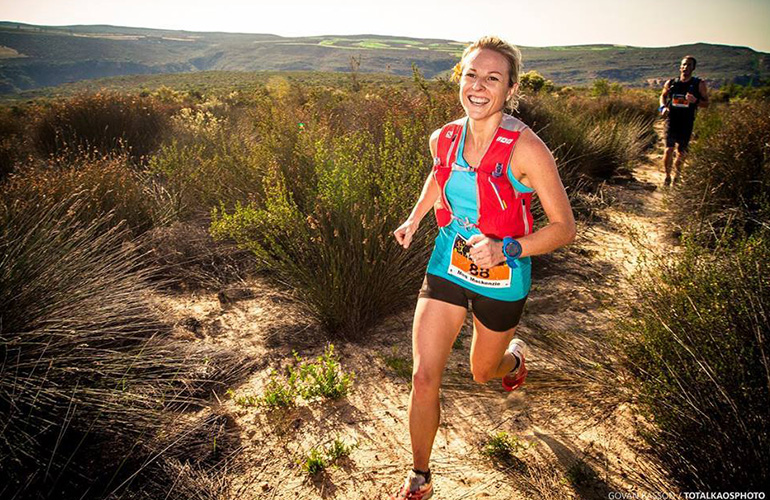
© Sven Musica
With her mother, father, and aunt all distance runners, it was inevitable Meg MacKenzie would follow suit. She grew up on a farm, and enjoyed cross-country through her school years. When she was 25, and without training, she came second in the Three Cranes Challenge stage race, and was first in her age group. “From there I started thinking about trail running more seriously,” she says.

She began working with a coach, got sponsorships and has since had a string of podium and first place finishes in stage and trail running races. Her specialty is mid-distance racing.
“I don't know what it is but I keep entering those shorter, sharper races,” she says. “You can race more if you do the 30 k to 40 k distance. And I love racing. That's part of why I do it. I crave competition.”
Meg also coaches other runners to reach their dreams. She practices meditation daily and uses mindfulness in her approach to life and coaching. “I've had a lot of experience in the trail running community and “I can see that women in particular struggle to get started, and if they do get started they struggle to maintain what they're doing,” Meg says. “That spurred me to help people, particularly female runners.”
Many trail runners rely solely on mental toughness to push themselves, but there are other ways of approaching training and racing. “Listen to your body and really try to get a mind-body connection going because that's the most important connection you can have. Pushing through isn't always the best option.”

Meg's three tips for bringing mindfulness to the trail:
Create your context for each training session
By consciously determining what you want to get out of each session, you will avoid tumbling along in an unconscious blur of day-to-day slog. It takes five minutes, and when you get better at it, one minute. Before you step out the door ask yourself what you want to get out of the next few hours. Maybe it’s an escape after a long day. Maybe you want to learn more about your downhill running. Perhaps you need to relax and take it easy. Or maybe you want to consciously push yourself to the correct splits and times you laid out for yourself. Whatever it is, take a quiet moment to determine it consciously before you set off.
Forgive yourself
Forgive yourself for any training or racing that didn't go how you wanted
Acknowledge what happened, give up the resistance to what happened, let go – it creates freedom. And make a decision to move forward. This will allow for more flow and energy rather than getting stuck in one off day, week, month or race.
Drop the story
The story is everything we create in our heads about the present moment and most of us allow that to stop us. For example, you would like to go for a run BUT its a bit rainy and cold, you don't have quite enough time, you really want to BUT maybe you could go tomorrow when the weather is better, or when you get out of work a bit earlier. The story is everything after BUT.
The 'is-ness' is that, yes, it is rainy and cold. And you have promised yourself to go for that run. So what is your decision? If you act from is-ness, you acknowledge that it is cold and rainy and you make a decision to go anyway because that is the best decision to make out of what IS. So drop the story and move on in the present!
Meditate
Meditation is a powerful tool to use before or after a race or as part of your daily life. It allows you to create space in your mind and be more present. This, in turn, allows more flow, as you will be more conscious with the present moment, instead of rushing through another day of training stuck in the future worrying or feeling anxious about the past. There are lots of guided meditations out there, try one, start small and just be.